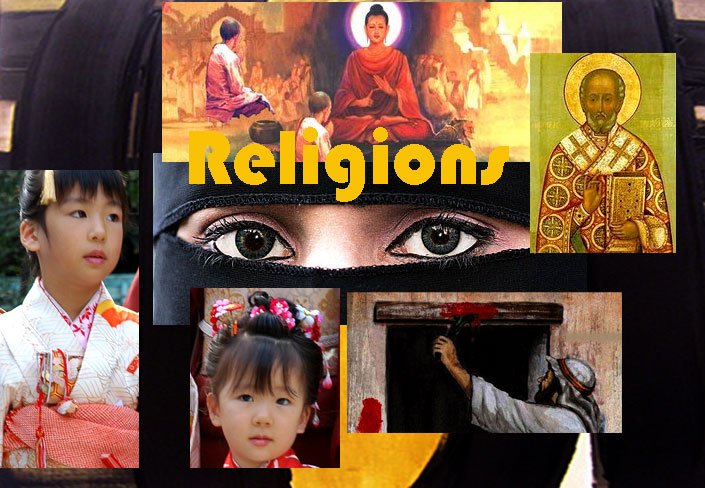
What Is Religion?
by Bonnie McCarson
In earlier articles I have discussed archetypal forms or images that appear in art or literature for the arts are a means of expressing what is happening at the deepest levels of our psyches. However, when I explore the arts seeking signs of archetypal meaning, I inevitably wind up at what could be called the great religious questions of mankind. Man has been a religious being as far back into prehistory as scholars can postulate. Jung devoted a chapter in his Psychology and Religion to what he believed to be “the facts which bear out the existence of an authentic religious function in the unconscious mind.” (Jung 3)
Before going further, let us clarify what we mean by the word “religion.” In modern culture we often begin to consider the many systems that have developed over time to serve the religious function. The root word in Latin, however, has nothing to do with organizations and systems; those are the structures which have developed from some religious experience and which often as not lose the true meaning of the word religion in becoming too concretized and rigid. The Latin word “religare,” from which “religion” is derived, simply means “to bind back.” Thus, the religious function in the truest sense of the word is that which binds us back to the original wholeness from which we came. As we develop an ego and become concerned about survival and our place in the material world, we tend to grow further out of touch with the archetypal realm that binds us back to the original wholeness. To use a religious metaphor, we are cast out of the Garden of Eden (original wholeness). Consciousness and free will separate us from that innocence and at the same time cut us off from part of ourselves. The religious function exists as a medium for binding our conscious selves back to that original wholeness.
When Jung discusses religion, he makes it clear that what he means by the word “is a careful and scrupulous observation of what Rudolf Otto aptly termed the ‘numinosum,’ that is, a dynamic existence or effect not caused by an arbitrary act of will.” He goes on to say, “The numinosum is either a quality of a visible object or the influence of an invisible presence causing a peculiar alteration of consciousness.” (Jung 4) This is where the archetypal realm comes into play to give meaning to something which otherwise might be meaningless. It is the experience of the numinous, the encounter with the archetype, which reconnects us to the original wholeness. Thus, religion is not a set of dogma nor a structure or organization.
Our world at present is visited almost daily by violence that claims to have as its cause religion. I conjecture that anyone who says this violence is an outgrowth of religion has totally lost connection with the “numinosum” and has substituted for it the maniacal schemes of some would-be demi-god whose true aim is power. Let us call our current world problems what they are – rages of the have-nots and the haves. Again, to use a religious metaphor, it is more like the Cain’s jealousy of Abel, and violence moves us further from connection to the original wholeness, rather than closer to it. The greatest religious element in the current world affairs may be that the atrocities being done in the name of religion might shock us into searching for what religion truly is, thereby opening a door for the numinosum to reconnect us. Perhaps our planet is having to suffer what some have called the dark night of the soul in order to move toward integration.
Note: It is my rather ambitious aim to continue to explore the religious function from a Jungian perspective and to include works of literature which reflect it.
References and Suggestions for Further Reading:
- Hoeller, Stephan A. Jung and the Lost Gospels. Wheaton, Illinois: The Theosophical Publishing House, 1989
- Jung, C.G. Psychology and Religion. New Haven, Connecticutt: Yale University Press, 1938
– Source meta-religion.com




